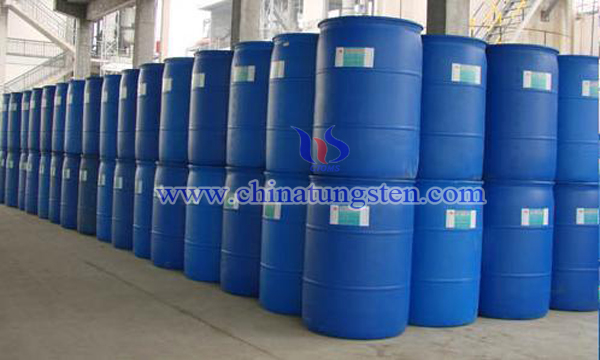A New Method for Catalytic Synthesis of Methyl Acetate
- Details
- Category: Tungsten Information
- Published on Saturday, 02 February 2019 23:57
Methyl acetate is an important organic material widely used in the synthesis of acetic acid, acetic anhydride, methyl acetate, ethylene acetate and acetamide.

The traditional synthesis method of methyl acetate is esterification with homogeneous catalyst (sulfuric acid). However, the disadvantages of this method are that sulfuric acid has serious corrosion on equipment, low conversion and long reaction time. Moreover, methyl acetate can form azeotrope with water or methanol, which is difficult to separate and obtain high purity methyl acetate. Therefore, choosing heterogeneous catalysts with good catalytic effect to replace inorganic acids of homogeneous catalysts can not only avoid the above defects, but also make homogeneous catalysis heterogeneous.
In order to overcome the shortcomings of existing catalysts for catalytic synthesis of methyl acetate, such as serious equipment corrosion, many side reactions and complex post-treatment process, some researchers used phosphotungstic acid as catalyst for synthesis of methyl acetate and preparation of methyl acetate. The main processes are as follows:
1.Adding 2.0 g of P123 and 15 g of N, N-dimethylformamide (DMF) and 64 ml of water to 11.2 g of 37% hydrochloric acid, stirring at 40 ℃ until P123 is completely dissolved; then adding 4.45 g of tetraethyl orthosilicate to the above solution, stirring at 40 ℃ for 1 hour, then adding 1 g of industrial ES955 silica gel, after crystallization at 120 ℃ for 30 hours, filtering, washing and drying, the original powder mesoporous material is obtained. Powder mesoporous materials were calcined in muffle furnace at 600 for 24 hours, template was removed and spherical mesoporous silica was obtained.
2.The above mesoporous silica was vacuum dried at 150 °C for 6 hours, and after cooling to room temperature, 30 ml of a concentration of 10 mol / L of methanol and 4 g of phosphotungstic acid were placed together in a 100 ml polytetrafluoroethylene liner. In the kettle, the reaction vessel was closed and stirred at 35 °C for 24 hours to obtain 1.25 g of the target product supported phosphotungstic acid catalyst, and the content of the phosphotungstic acid was 20% by weight based on the total amount of the supported phosphotungstic acid catalyst. The content of the spherical mesoporous silica carrier was 80% by weight.
After loading the phosphotungstic acid, the pore volume and specific surface area of the spherical mesoporous silica are greatly reduced. During the reaction, the phosphotungstic acid enters the interior of the composite, which makes the hydrogenation catalytic performance better. When the esterification reaction of acetic acid and methanol is catalyzed, the side reaction is small and the equipment is not corroded, and the supported catalyst can be recycled and reused, and the post-treatment process is simple.
- Tungsten Oxide Manufacturer & Supplier, Chinatungsten Online: www.tungsten-oxide.com
- Tungsten News & Prices of China Tungsten Industry Association: www.ctia.com.cn
- Molybdenum News & Price: news.molybdenum.com.cn
- Tel.: 86 592 5129696; Fax: 86 592 5129797; Email: sales@chinatungsten.com



 sales@chinatungsten.com
sales@chinatungsten.com